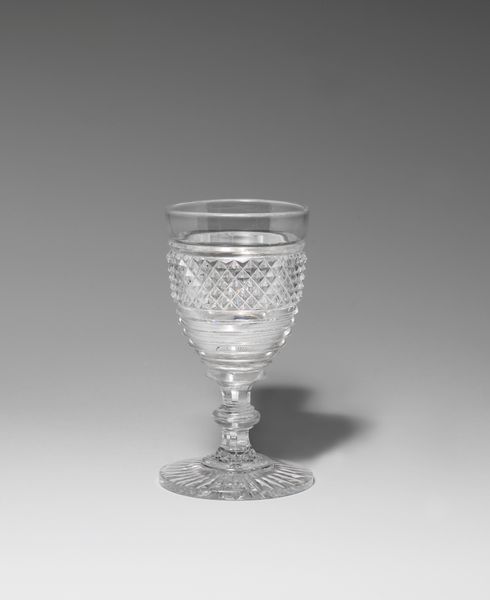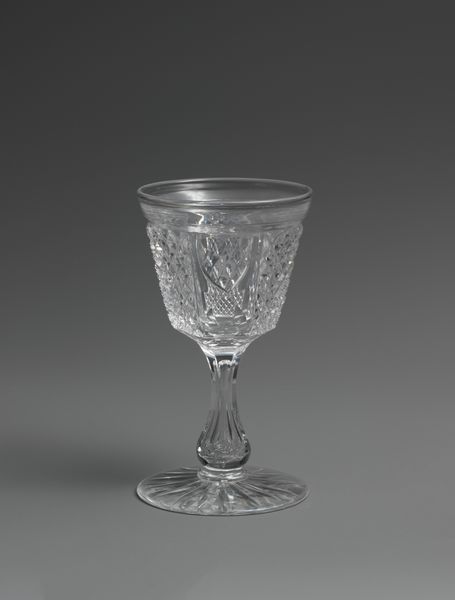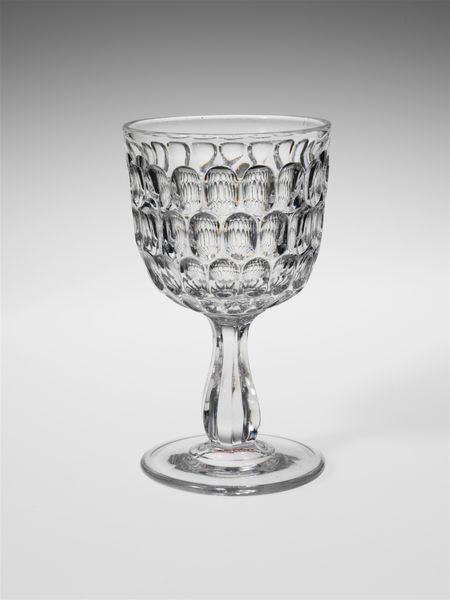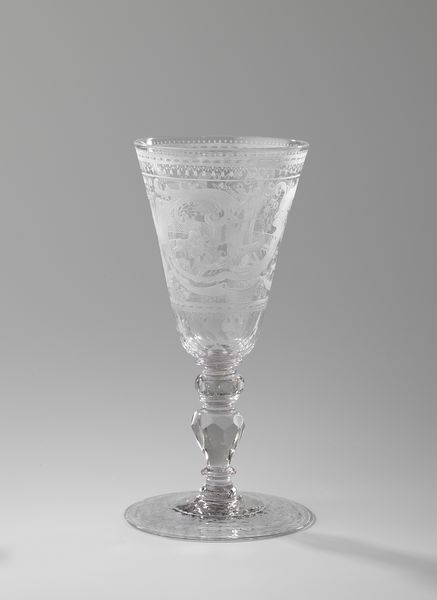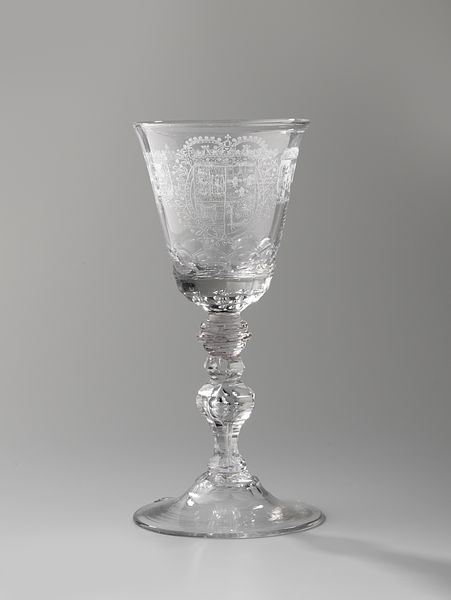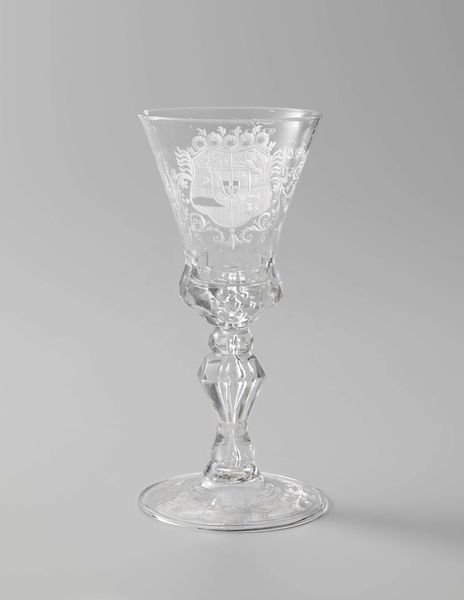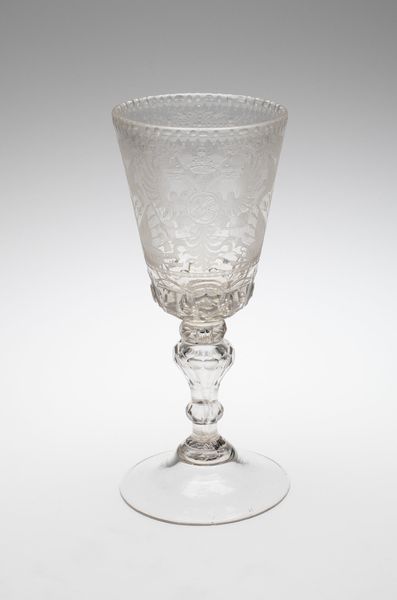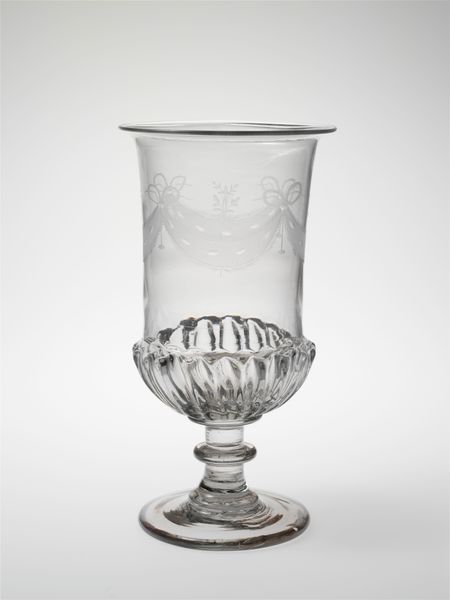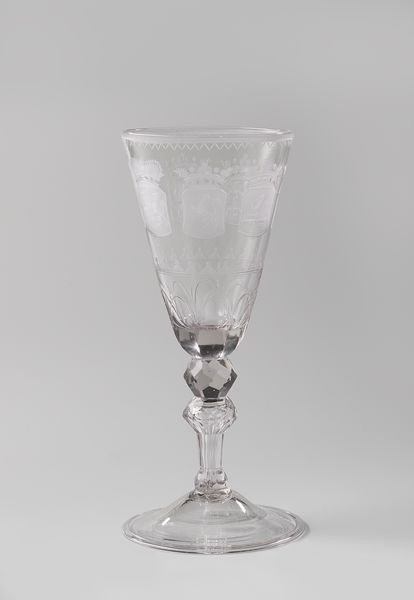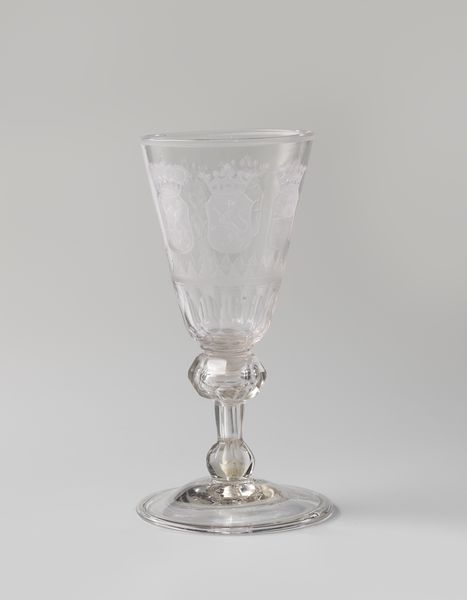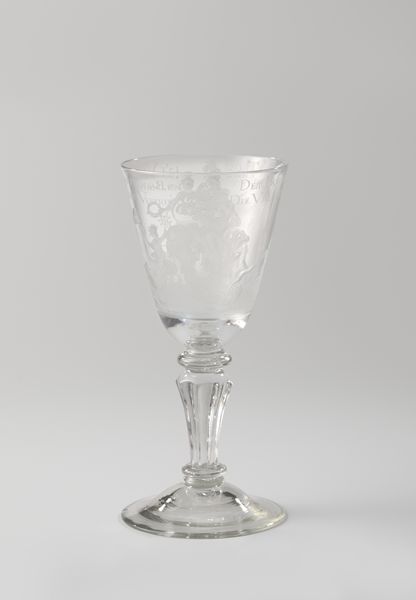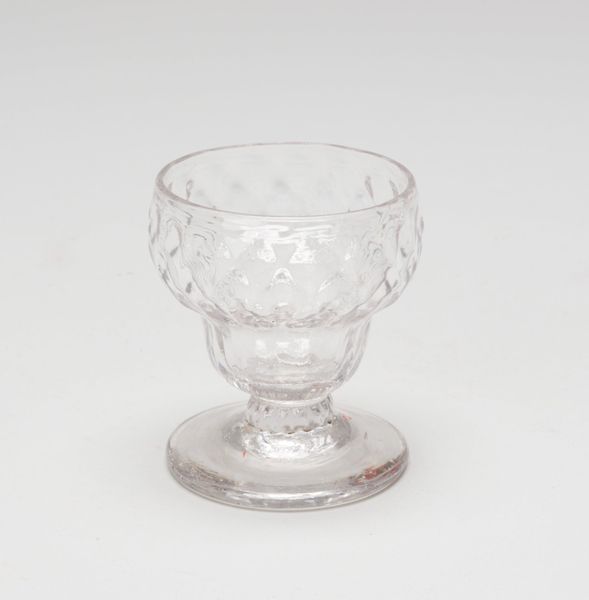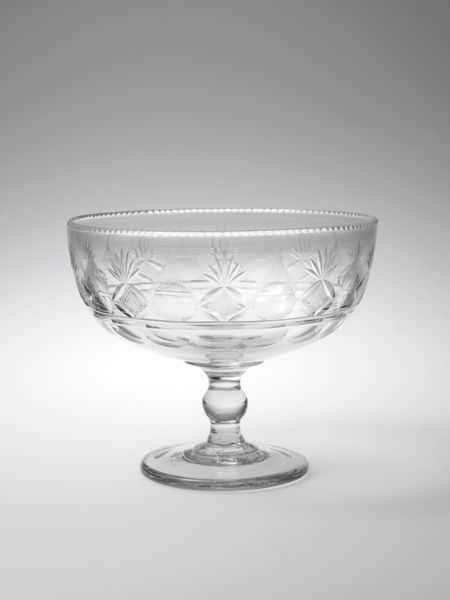
glass
#
neoclassicism
#
glass
#
decorative-art
Dimensions: 4 in. (10.2 cm)
Copyright: Public Domain
Editor: So, this is “Claret,” a glass wine goblet crafted around 1818 by Pellatt & Green, currently residing at the Metropolitan Museum of Art. It’s quite delicate, with intricate diamond patterns cut into the glass. What initially strikes you when you look at it? Curator: It reminds me of catching fireflies on a summer evening, each facet sparkling like a tiny trapped light. Beyond the visual appeal, I’m drawn to the implied touch—the craftsman's hand shaping molten glass, the precision required to create those neat diamond cuts. Do you see echoes of Neoclassicism in its restrained form, its aspiration for timeless elegance? Editor: Yes, I do! The symmetry feels very classical. But it also seems almost...utilitarian. Was decorative glass common at the time? Curator: While functional, yes, but this wasn't your everyday tumbler! Consider the burgeoning middle class in the early 19th century. Glassware like this symbolized affluence, taste, access. Each precisely cut diamond was a tiny statement. Tell me, does knowing this change how you see it? Does it shimmer a little brighter now? Editor: It does, actually. It's like looking into a time capsule of aspirations. All that detail, now it’s so much more! I hadn’t thought about how something like a drinking glass could tell such a detailed story. Curator: Exactly! That's the magic, isn't it? Everyday objects, elevated to tell timeless tales. Each sparkling cut reflecting history back at us. Editor: It’s like… finding art hidden in plain sight. Thanks, I'll definitely look at glassware differently now.
Comments
No comments
Be the first to comment and join the conversation on the ultimate creative platform.
